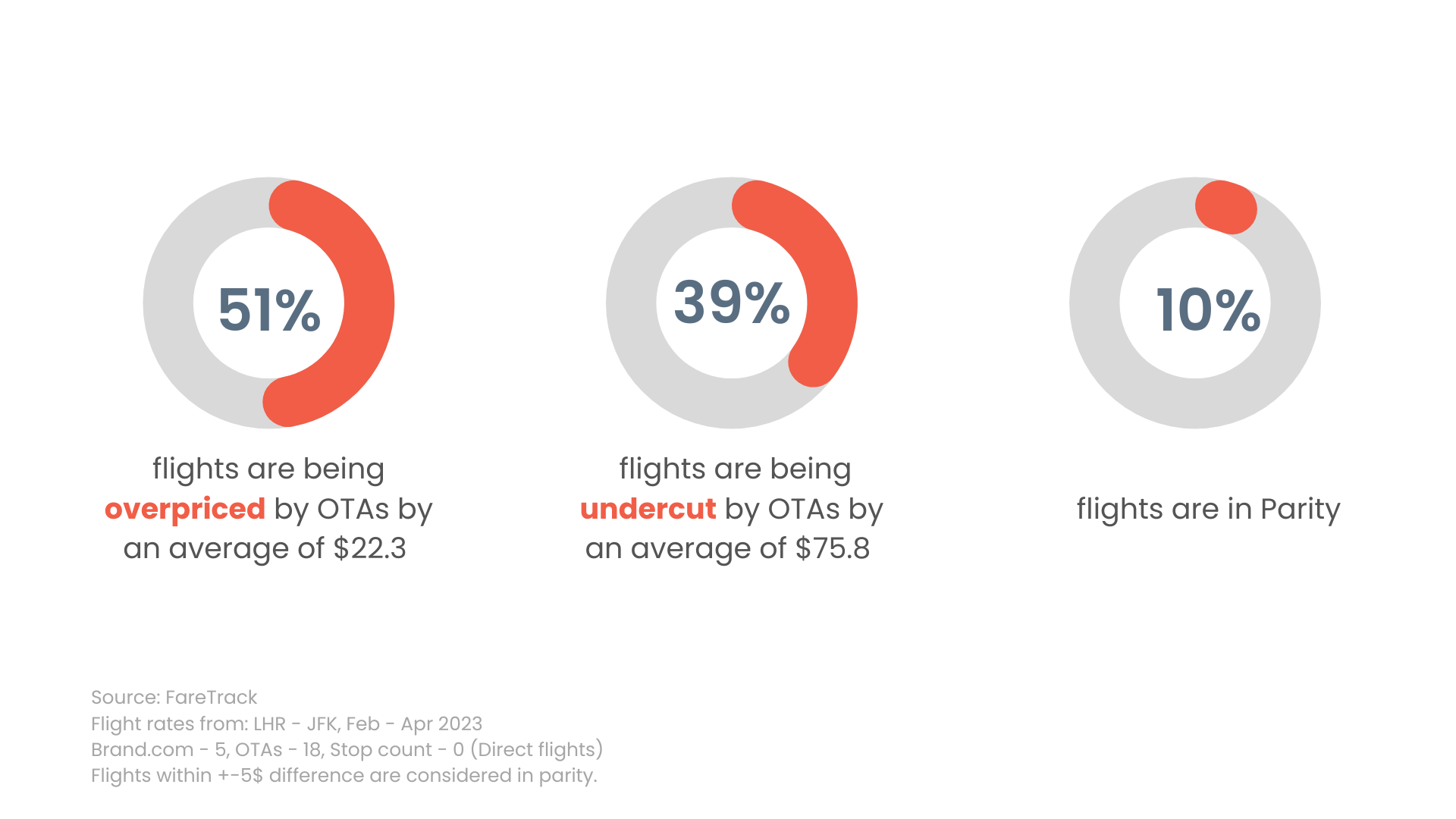In a recent research piece, we used FareTrack data to look at the topic of rate parity for airlines. The results were striking, with only 10% of airlines on a popular route actually being in parity. Let’s take a look at this challenge, and explore just how much of an issue it is for airlines.
So, perhaps the most obvious place to start is actually looking at what rate parity actually is. In simple terms, parity in airlines means maintaining consistency in fares across various distribution channels. If an airline has distributed fares to a channel to sell on its behalf, there is an expectation from the channel to maintain parity of fares. However, often, these expectations fail, resulting in disparity.
Parity failures occur when an airline has distributed fares to a channel to sell on its behalf, and the channel is expected to maintain fare parity. However, this expectation fails in certain cases, resulting in geo-targeted fares, discounts, and aggregator/consolidator bulk seat purchases sold at a discount.
Such channel partners can create disparity, introduce revenue losses, decrease trust, and reduce direct bookings.
In a recent Revenue Hacker blog, Kris Glabinski explored how technology is changing the travel industry. One such way we see technology influencing fare purchasing behaviour is in younger audiences using their mobile devices for flight recommendations. Often, the device will only push the top results, meaning that if the airline brand is not top of the search results, you will lose out. Moreover, if your prices are more expensive than your partners who appear at the top of the search, your potential customers will lose trust in you.
So how prevalent is the rate parity issue for airlines currently?
In our recently published findings, we took a look at LHR to JFK, a popular route, between march and April. Our results were striking. Only 10% of flights were in parity.

The solution to rate parity involves airlines being aware of these challenges and adapting to the changing traveller inspirations. The first step is being able to pro-actively monitor instances of rate parity, in order to respond to disparity.
Solutions, like FareTrack allow airline revenue management teams to quickly identify disparity, and act to mitigate it, including presenting proof of disparity to partners who operate outside of agreements.
In conclusion, rate parity is a persistent challenge, but with the right technology partners, such as FareTack, one that can be more effectively managed.




